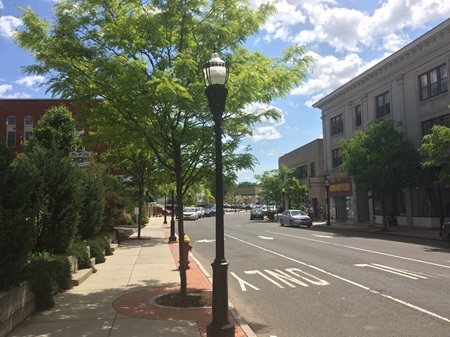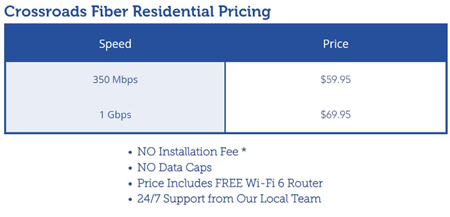
Fast, affordable Internet access for all.

The city-owned utility in Chicopee, Massachusetts has adopted the “fiberhood” approach to broadband deployment as it expands affordable access to city residents under the Crossroads Fiber brand.
Frustrated by a lack of affordable broadband access, the city tabbed Magellan Advisors in 2015 to conduct a feasibility study into city-provided broadband access. After a survey showed a majority of city residents would support such an initiative, Chicopee Electric Light launched Crossroads Fiber in the summer of 2019 in a small pilot area.
Since then, the utility has been expanding access steadily to the rest of the city – joining a growing roster of city-owned utilities that are responding to broadband market failure by taking matters into their own hands.

Planners have broken down the city into 144 different fiberhoods, where user interest gleaned from the project website dictates which parts of the city see deployment priority. It’s an approach some communities adopt to finance network construction without having to rely on tax revenues or loans. For Chicopee the estimated cost to build a fiber network that reaches all 55,000 residents is between $30 and $35 million.
Soon after launch, telecom monopoly-backed proxy organizations (like the New England Ratepayers Association) quickly got to work insisting the network would be a financial catastrophe. That hasn’t proven true; utility officials say the revenues earned from existing deployments have helped finance a slow, steady expansion into additional parts of the city.
Chicopee Electric Light General Manager Daniel Faille tells local news outlet The Reminder that the city has deployed fiber to parts of at least 88 different fiberhoods based on user demand. Each fiberhood includes roughly 150 to 250 homes. The utility plans to expand into 20 more fiberhoods this year.
Google Fiber first popularized the “fiberhood” concept during its initial wave of broadband deployments a decade ago. While the concept attempted to democratize broadband deployment, some academic criticism found Google’s use of the term potentially reinforced existing inequity; especially if access ultimately wasn’t uniformly deployed to minority and low-income areas (which may ironically lack the access to sign up for access).

In this case, Chicopee Electric Light says it’s dedicated to uniform delivery of fiber to the entire city and all 144 fiberhoods, something officials believe will be completed in two and half years.
“What that is allowing us to do is get kind of a quicker return on investment and a revenue stream that we can then use to build the less interested areas,” Faille said. “Our build isn’t affecting our electric rates. We are using different funding for that, so people aren’t paying for it, none of your tax dollars are being used for it.”
Chicopee Electric Light did not respond to several requests for comment seeking clarity on funding, homes passed, and take rate, though similar deployments have financed expansion on the back of existing revenues. Chicopee received $38 million in federal ARPA funds, but the city does not appear to have leveraged that funding for broadband access.
Currently, residents in range of the network have access to two service tiers: a symmetrical 350 megabit per second (Mbps) service for $60 a month; and a symmetrical 1 gigabit per second (Gbps) for $70 a month. The utility’s broadband service comes with no installation fees, usage caps, or long-term contracts.

Previously, Chicopee broadband access was a market largely dominated by Charter Communications (Spectrum). The overall lack of competition resulted in spotty access, slow speeds, high prices, and substandard customer service. Like in so many markets, Charter’s apathy opened a door more and more city-owned utilities have been happy to walk through.
“We responded to a public request for a competitive internet offering that would also be affordable and state of the art,” Faile said. “At this point the project has gotten to self-sufficiency so what we are getting for income is allowing us to build the next area so the project is progressing on its own is a great thing.”
Inline image of downtown Chicopee courtesy of Wikimedia Commons, CC BY-SA 4.0 DEED Attribution-ShareAlike 4.0 International
